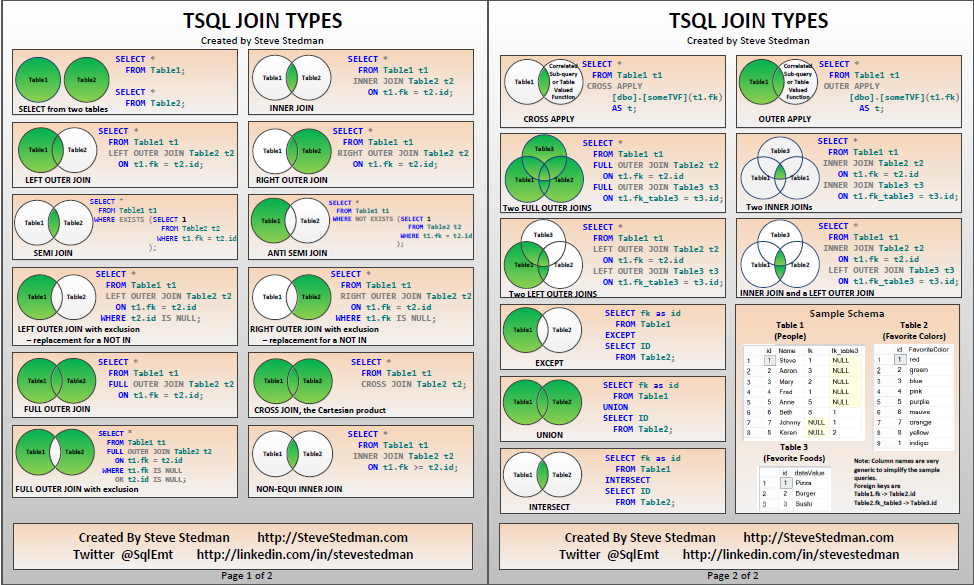
Unlike inner joins, outer joins can return unmatched rows in one or both . Outer join of two types: 1. Left outer join (also known as left join ): this join returns all the rows from left table combine with the matching rows of the right table. Learn about the outer join. May LEFT OUTER JOIN - Based on the two tables specified in the join clause, all data is returned from the left table. On the right table, the matching . A LEFT OUTER JOIN is one of the JOIN operations that allow you to specify a join clause.

It preserves the unmatched rows from the first (left) table, joining them . For sake of simplicity and ease of understanding , we will be using a new . Let’s say we have two sets of data in our relational database: table A and table B, with some sort of relation specified by primary and foreign keys. Select all records from Table A and Table B, where the join. Depending on how you want to analyze the data, the INNER JOIN we used last lesson might not be sufficient because the . SQL Lesson 7: OUTER JOINs. The full outer join combines the of both left join and right join.
If the rows in the joined table do not match, the full outer join sets NULL values. Jan Joins and Unions can be used to combine data from one or more tables. The difference lies in how the data is combined. Summary: in this tutorial, you will learn how to emulate SQLite full outer join using the UNION and LEFT JOIN clauses. If the word JOIN is used without specifying INNER or OUTER , then the JOIN will be an inner join.
With the full outer join , no rows will be left out of the . It is also called as a LEFT OUTER JOIN etc. An outer join combines the columns from all tables on one or more . ALL Foo rows will be returned even if the Filter condition fails. This can catch out the unwary. Its output allows us to see all records from the table on the left side of the JOIN , including all matching rows of the two tables.
That’s why, compared to the INNER JOIN , the. It returns all the rows from both the tables, if there is no matching row in either of the sides then it displays NULL values in the. FULL OUTER JOIN in Sql Server.
In this article we take a look at some of the common joins , both ANSI and non- ANSI, available in SQL. There is actually no difference between a left join and a left outer join – they both refer to the exact same operation in SQL. An example will help clear this up.
The join is usually performed in a more efficient manner than actually. A normal join finds values of two tables that are in a relation to each other. A LEFT JOIN or a LEFT OUTER JOIN takes all the rows from one table, . An implicit join is specified to perform a left outer join of a table with a field from .
No comments:
Post a Comment
Note: only a member of this blog may post a comment.